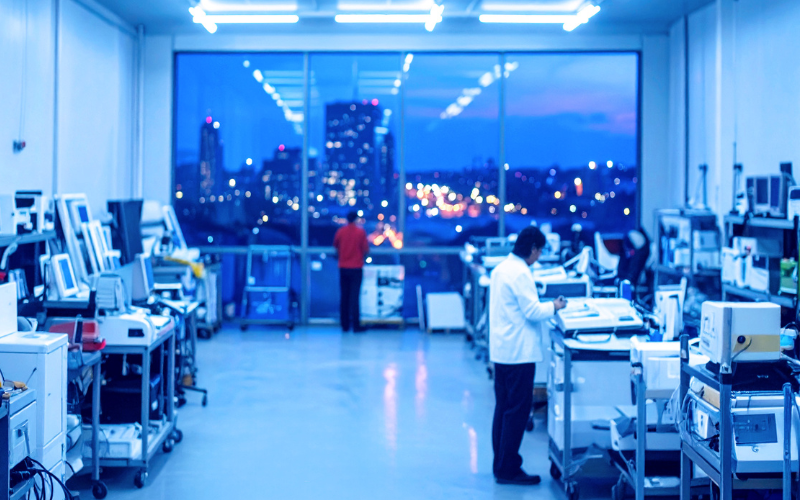Introduction: Growing Demand for Pre-Owned Medical Equipment
The second-hand med-tech market is expanding rapidly, driven by rising healthcare costs, the need for budget-conscious solutions and a global push for sustainability. Hospitals and clinics, especially in emerging markets, are increasingly adopting refurbished and pre-owned capital equipment to maintain high standards of care without exceeding budgets. This article explores the reasons behind this trend, key device categories, quality standards and what the future holds.
1. Rising Demand for Second-Hand Medical Equipment
Cost-Efficient Access to Advanced Technology
Healthcare providers are turning to refurbished equipment for:
- Cost Savings: Used equipment costs 30–70% less than new alternatives.
- Technology Access: Enables acquisition of premium devices like MRI machines and surgical robots.
- Infrastructure Expansion: Ideal for growing hospitals and clinics with limited capital.
2. High-Demand Devices in the Refurbished Market
Core Equipment Being Resold Globally
The most commonly refurbished medical technologies include:
- Imaging Systems: MRI, CT and ultrasound machines.
- Patient Monitors & Ventilators: Essential for ICUs and emergency care.
- Surgical & Endoscopic Instruments: Critical for minimally invasive procedures.
- Dialysis Machines: Popular among outpatient centers and low-resource hospitals.
3. Importance of Certified Refurbishment Programs
Ensuring Safety, Quality and Compliance
Reliable refurbishment programs offer:
- Reconditioning & Calibration: Replacing key components and updating software.
- Regulatory Adherence: Devices meet local and international health standards.
- Warranties & Support: Reputable vendors provide product guarantees and service packages.
4. Challenges Facing the Second-Hand Equipment Market
Navigating Quality and Regulatory Hurdles
While demand is rising, key concerns include:
- Regulatory Inconsistency: Varied rules on importing and using refurbished devices.
- Verification & Traceability: Ensuring devices are safe and clinically effective.
- Technology Limitations: Older systems may lack AI integration or modern compatibility.
5. Future Outlook: Sustainability and Digital Transformation
Second-Hand Equipment in a Circular Healthcare Economy
The second-hand med-tech market is set to evolve with:
- Circular Economy Models: Manufacturers investing in take-back, refurbish, and resale programs.
- Predictive Maintenance via IoT: AI-driven systems predict when equipment should be serviced or replaced.
- Increased Institutional Trust: Hospitals are now including certified refurbished devices in long-term procurement strategies.
Conclusion: A Smart, Sustainable Choice for Global Healthcare
Refurbished med-tech equipment is no longer a niche solution—it’s becoming a strategic, sustainable and cost-effective approach for healthcare institutions worldwide. As technology evolves and industry standards improve, second-hand capital equipment will play a central role in future healthcare delivery.





